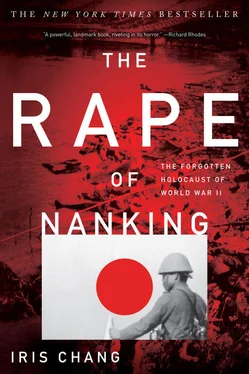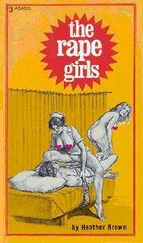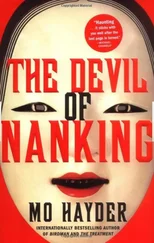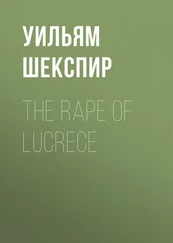Fortunately, the crimes of Nanking were recorded not only on paper but on motion picture film, making them almost impossible to deny. John Magee, who possessed an amateur movie camera, filmed several bedridden victims at the University of Nanking Hospital. They were haunting images—the horribly disfigured, charred men the Japanese had tried to burn alive; the enamel-ware shop clerk whose head received a tremendous blow from a Japanese bayonet (six days after entering the hospital, the pulsation of his brain could still clearly be seen); the gang-rape victim whose head was almost cut off by Japanese soldiers.
George Fitch eventually smuggled the film out of China, though at great risk to his life. On January 19, he received a permit to leave Nanking and took a Japanese military train to Shanghai, where he shared the third-class coach with “as unsavory a crowd of soldiers as one could imagine.” Sewn into the lining of his camel’s hair coat were eight reels of 16-mm negative movie film of Nanking atrocities. There was no doubt in his mind, he told his family later, that if he had been searched and caught with the film, he would have been killed instantly. But luckily Fitch made it to Shanghai, where he took the negatives to the Kodak office and developed four sets of prints. One of them went to the Nazi Party leader John Rabe before he left Nanking for Germany. Some of the others ended up in the United States, where Fitch and other missionaries showed them during lectures before religious and political groups. Several frames from the films were reprinted in Life magazine; segments of actual footage later appeared in Frank Capra’s newsreel documentary, Why We Fight: Battle of China. Decades later the film reappeared in two historical documentaries released during the 1990s: Magee’s Testament and In the Name of the Emperor.
One can only imagine how the Japanese military leadership smoldered as these written reports, photographs, and even films of Japanese atrocities found their way into the world media. Many of the zone leaders lived in constant terror and believed that the Japanese would kill them all if they could get away with it. Some of the men barricaded themselves in their houses and after dark dared not venture outdoors except in twos or threes. At least one, George Fitch, suspected that there was a price on his head. But despite their fear, they continued to take turns guarding key areas of the zone at night and persisted in publicizing the Japanese atrocities. “The Japanese military hate us worse than the enemy for we have shown them up to the world,” John Magee wrote on January 28, 1938. “We are all surprised that none of us have been killed and whether we all get out safely is yet a question.”
7. THE OCCUPATION OF NANKING
THE RAPE of Nanking continued for months, although the worst of it was concentrated in the first six to eight weeks. By the spring of 1938 the people of Nanking knew that the massacre was over, and that while they would be occupied they would not necessarily all be killed. As Nanking lay prostrate under Japanese rule, the military began to implement measures to subjugate the entire population.
At first there was not much to subjugate. “You cannot imagine the disorganization of the city,” one foreigner wrote, “the dumping of filth and every kind of waste everywhere.” Trash and human flesh putrefied in the streets because the Japanese did not permit anything to be done without their permission—not even the disposal of garbage and corpses. Indeed, for days army trucks drove over several feet of corpses under the Water Gate, grinding over the remains in order to impress upon the populace the terrible results of resisting Japan.
Observers estimated that Japanese damage to public property totaled some $836 million, in 1939 U.S. dollars, and that the private property loss was at least $136 million. These figures do not include the cost of irreplaceable cultural artifacts taken by the Japanese army.
Under the direction of the sociologist Lewis Smythe, the International Safety Zone Committee conducted a systematic survey of damage to the Nanking area. Investigators visited every fiftieth inhabited house in the city and also went to every tenth family in every third village in the countryside. In a sixty-page report released in June 1938, Smythe concluded that the 120 air raids that Nanking experienced and the four-day siege of the city did only 1 percent of the damage inflicted by the Japanese army after it entered Nanking.
Arson caused most of the destruction. Fires in Nanking began with the fall of the city and lasted more than six weeks. Soldiers torched buildings under the guidance of officers and even used special chemical strips to set the fires. They burned down churches, embassies, department stores, shops, mansions, and huts—even areas within the Safety Zone. The zone leaders could not put out these fires because their pumps and fire equipment had been stolen by the Japanese. By the end of the first few weeks of the Rape of Nanking, the military had incinerated one-third of the entire city and three-fourths of all the stores.
They burned down the Russian legation embassy, defiled the American embassy, and ransacked almost every foreign house—even those marked clearly with flags or seals. The Japanese reserved American property for special insult: they tore down the American flag six times from the University of Nanking and trampled it in the dirt, threatening to kill anyone who dared to put it up again. But German property suffered almost as badly as American property, despite the alliance between the Nazi and Japanese governments. The Japanese tore down Nazi flags, burned German homes and businesses, and even stole pictures of Hitler and Hindenburg, a “remarkable” act, one German wrote, “considering the cult of the Japanese for their emperor pictures.”
The consequences of the sack of Nanking extended far beyond the city walls. Japanese soldiers devastated the countryside around Nanking, torching entire villages by burning down straw huts and collecting furniture, tools, and farming implements into brick houses so that everything could be incinerated all at once. The region near the city was stripped clean of farm animals, both domestic and otherwise.
The Japanese also used acetylene torches, pistol shots, and hand grenades to blast open vaults in banks, including the personal safe deposit boxes of German officials and residents. Soldiers were permitted to mail back to Japan some of their booty, but most of the goods were confiscated and concentrated for official use. Warehouses filled rapidly with rare jade and porcelain artwork, rugs and paintings, gold and silver treasures. More than two hundred pianos were housed in a single storage hall. In late December the Japanese began to heap stolen goods—jewelry, art, furniture, metal, antiques—on the wharves for transport back to Japan.
Japanese looters usually sought big-ticket items. They coveted foreign cars, prompting committee members to believe that the army would have taken all of them in the city if foreigners were not sitting in them. (Trucks used to cart corpses away were also stolen.) But the Japanese also invaded Nanking University Hospital to steal trivial items—pens, flashlights, and wristwatches from the nurses—and broke into the Safety Zone repeatedly to steal bedding, cooking utensils, and food from the homeless. A German report noted that on December 15 the Japanese had forced five thousand refugees to line up so that they could steal a total of $180 from them. “Even handfuls of dirty rice were snatched from them by the soldiers,” George Fitch wrote. “Death was the sure retort to any complaint.”
In January 1938, not one shop was officially open in Nanking except for a military store and the International Committee’s rice shop. The harbor was practically empty of ships. Most of the city lacked electricity, telephone, and water service because the Japanese had rounded up and executed some fifty employees from the local power plant. (The lack of running water made it difficult to bathe, but many women chose not to bathe anyway, in hopes that their unwashed flesh would repel Japanese soldiers intent on raping them.)
Читать дальше











